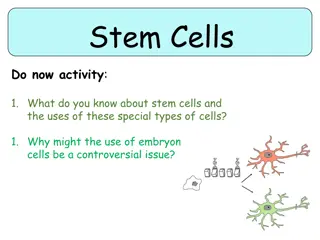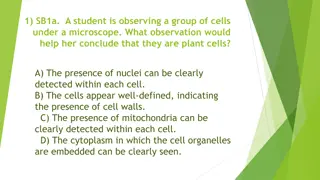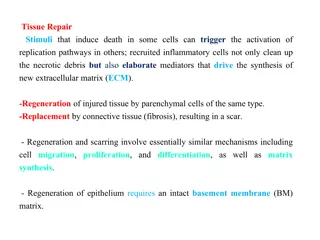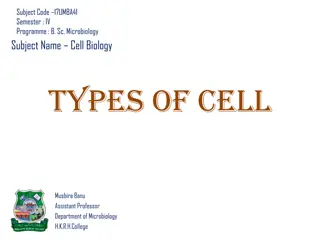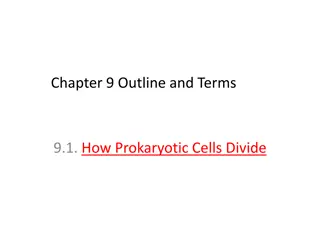Introduction to Cells
Delve into the world of cells through microscopes, exploring magnification techniques and staining methods to reveal intricate cell structures. Understand how to calculate magnification, measure cell size, and use stains to highlight cell components for clearer observation.
Download Presentation

Please find below an Image/Link to download the presentation.
The content on the website is provided AS IS for your information and personal use only. It may not be sold, licensed, or shared on other websites without obtaining consent from the author.If you encounter any issues during the download, it is possible that the publisher has removed the file from their server.
You are allowed to download the files provided on this website for personal or commercial use, subject to the condition that they are used lawfully. All files are the property of their respective owners.
The content on the website is provided AS IS for your information and personal use only. It may not be sold, licensed, or shared on other websites without obtaining consent from the author.
E N D
Presentation Transcript
Introduction to Cells Topic 2: Investigating Cells Standard Grade Biology
Magnification Cells can be seen more clearly using microscopes magnify Microscopes _________________________ the cells Microscopes may have two or three__________________________________________ objective lenses and one ___________________________________________. eyepiece lens
Calculating Magnification To work out Total Magnification use the following formula TOTAL MAGNIFICATION x = magnification of eyepiece lens magnification of objective lens
Since microscopes magnify cells we have a new unit of measurement. These new units are called _________________________. microns 1mm 1 1000 = = 1000 m 1 m
Measuring Cell Size We can use microscopes to estimate the size of cells we are looking at e.g. if we know the diameter of the field of our field of view we can then estimate the size of the cells
a)if the field of view = 1mm Field of view Onion cell 1mm (1000 m) then onion cells are ______________ mm 0.5 500 microns or ______________( m) in length
b)if the field of view = 0.5mm or 500m then these cheek cells would be 500 100 5 mm or ______________ m in length 0.5 mm (500 m) Human cheek cell
Magnification Field of View Microns ( m) mm X40 4 4000 X150 1 1000 X400 0.5 500
Staining Cells Animal and plant cells can be stained _________________________ so that the structures within cells ____________________________________ seen more clearly can be______________________________
_________________________ stains the Iodine _________________________ of onion nucleus cells and also its _________________________. cell wall
Methyl Blue _________________________ is used to stain the _________________________ of nucleus __________________________. human cheek cells
Acetic orcein _________________________ is used to chromosomes stain the _________________________ present in the nucleus of cells which are about to divide.
This powerpoint was kindly donated to www.worldofteaching.com http://www.worldofteaching.com is home to over a thousand powerpoints submitted by teachers. This is a completely free site and requires no registration. Please visit and I hope it will help in your teaching.











